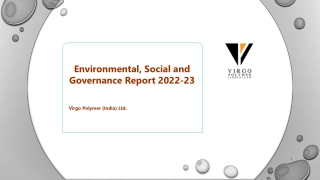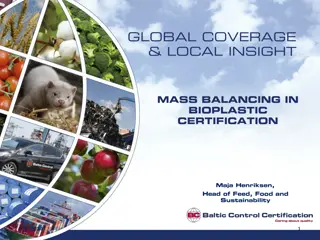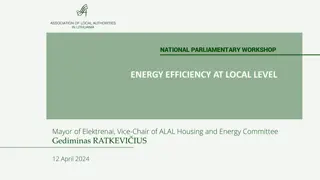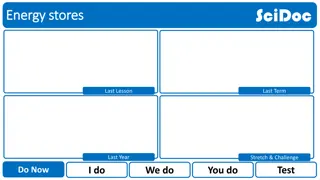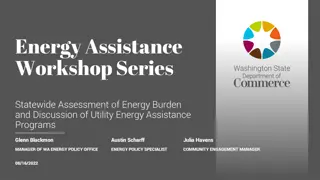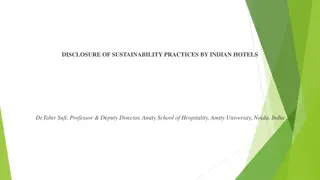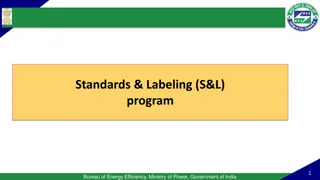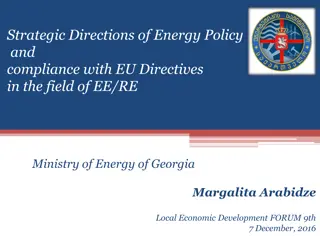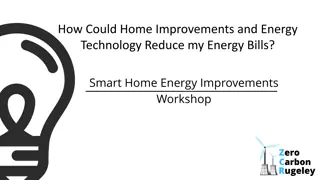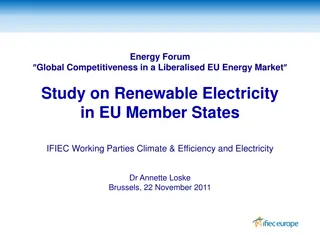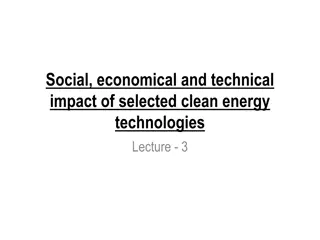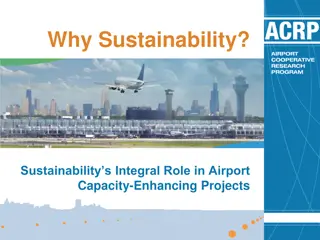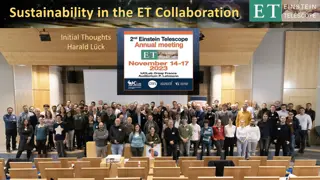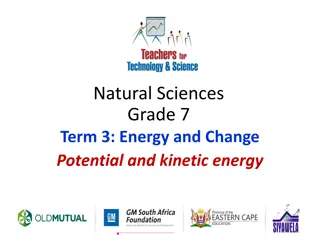Energy, Environment, and Sustainability Overview in India
India faces challenges in its energy sector with a growing demand, significant energy deficits, and a large population lacking access to electricity. The country has the 5th largest installed electricity capacity globally but also suffers from a substantial demand-supply gap. The focus on renewable energy sources and energy efficiency is crucial for addressing these issues and ensuring a sustainable energy future.
Download Presentation

Please find below an Image/Link to download the presentation.
The content on the website is provided AS IS for your information and personal use only. It may not be sold, licensed, or shared on other websites without obtaining consent from the author.If you encounter any issues during the download, it is possible that the publisher has removed the file from their server.
You are allowed to download the files provided on this website for personal or commercial use, subject to the condition that they are used lawfully. All files are the property of their respective owners.
The content on the website is provided AS IS for your information and personal use only. It may not be sold, licensed, or shared on other websites without obtaining consent from the author.
E N D
Presentation Transcript
ENERGY, ENVIRONMENT AND SUSTAINABILITY Gaurav Shukla CUTS International
OUTLINE Current Energy Scenario in India India s Installed Generation Capacity Demand Supply Gap Energy Deficits Way forward Why Renewable Energy? Sources of Renewable Energy Aspects of Renewable Energy Regulatory Support for Renewable Energy Why Energy Efficiency? Modes of Energy Efficiency Scope of Energy Efficiency Regulatory Support for Energy Efficiency Documentary (https://www.youtube.com/watch?v=qF49K2bzK2U) 2 Role you can Play!!
BACKGROUND India has world s 5th largest installed electricity capacity India is the 4th largest energy consumer in the world after the United States, China, and Russia. Energy demand is growing at an average of 3.6 percent per annum Energy conservation potential has been assessed as 23 percent, nearly 25,000 MW A 2012 report by the IEA estimated that nearly 25 percent of the population lacks basic access to electricity, while electrified areas suffer from rolling electricity blackouts. Of the 1.4 billion people of the world who have no access to electricity in the world, India accounts for over 300 million. 3
India's Installed Generation Capacity Total Installed Generation 234601.94 MW 12.39% 16.90% Thermal Nuclear Hydro Renewable 68.68% 2.01% 4 Source: Central Electricity Authority as on February 2014; See also, http://www.cea.nic.in/reports/monthly/executive_rep/feb14.pdf
Demand-Supply Gap 78,213 80,000 78,000 75,217 76,000 72,977 74,000 72,000 Demand in mu Supply in mu 70,000 66,811 68,000 66,000 64,000 62,000 60,000 Feb 13 Feb 14 5 Source: Central Electricity Authority as on February 2014; See also, http://www.cea.nic.in/reports/monthly/executive_rep/feb14.pdf
Energy Deficit 7.90% 8.40% General Shortage Peak Shortage 9.00% 8.00% 7.00% 6.00% 3.30% 5.00% 3.80% 4.00% 3.00% 2.00% 1.00% 0.00% Feb 13 Feb 14 6 Source: Central Electricity Authority as on February 2014; See also, http://www.cea.nic.in/reports/monthly/executive_rep/feb14.pdf
Way Forward Demand Supply 7
Way Forward Energy Efficiency Demand Supply Renewable Energy 8
WHY RENEWABLE ENERGY? Power Shortage Rising Prices Environmental Concerns Depleting Conventional Resources Abundance of Renewable Resources Sustainability 10
RENEWABLE ENERGY Any sustainable energy source that comes from natural environment. Renewable energy is energy which comes from natural resources such as sunlight, wind, rain, tides and geothermal heat. 11
MAJOR RENEWABLE ENERGY SOURCES Solar Energy Wind Energy Hydro Energy Geothermal Energy Biomass 12
ASPECTSOF RENEWABLE ENERGY It exists perpetually and in abundant in the environment Ready to be harnessed, inexhaustible It is a clean alternative of fossil fuels Energy that is derived from natural process that are replenished constantly 13
REGULATORY SUPPORTFOR RENEWABLE ENERGY DEVELOPMENT Electricity Act, 2003 Promoted generation of electricity from renewable sources National Electricity Policy, 2005 The Policy emphasized on the full development of feasible hydro projects and Laid down procedures for the speedy implementation of the same Integrated Energy Policy, 2006 Emphasized use of Renewables for reducing dependence on energy imports Rural Electrification Policy, 2006 The Policy recognized that non-conventional energy sources can be appropriately and optimally utilized to make available reliable supply of electricity to each and every household 14
WHY ENERGY EFFICIENCY? Convenient solution to bridge the gap between demand and supply Reduce capital investment in fuel, mining, transport, water and land required for power generation Ensure sustainable growth of country One Unit of energy saved, avoids three units of fresh capacity addition 16
ENERGY EFFICIENCY Energy Efficiency involves efficient utilisation of resources, which is a key to sustainable development Improving energy efficiency increases productivity, significantly reduces the green house gas emissions 17
MODESOF ENERGYEFFICIENCY Demand Side Management Standard and Labelling Energy Audits Awareness and Practice 18
SCOPEOF ENERGY EFFICIENCY Improved technology with more focus on research & development Generation Improved technology with better informed consumers to avoid electricity wastage Transmission & Distribution Efficient utilisation of available resources/products Consumption 19
REGULATORY SUPPORTFOR ENERGY EFFICIENCY DEVELOPMENT Energy Conservation Act, 2001 Established BEE, State designated consumers and funds to promote Energy Efficiency Energy Conservation Building Code sets minimum energy standards for new commercial buildings having a connected load of 100kW or contract demand of 120kVA National Mission on Enhanced Energy Efficiency The National Action Plan on Climate Change was released in June 2008. It outlines 8 Missions including National Mission on Enhanced Energy Efficiency (NMEEE). 20
Thank you Go Green Go Green G GAURAV AURAV S SHUKLA HUKLA 22
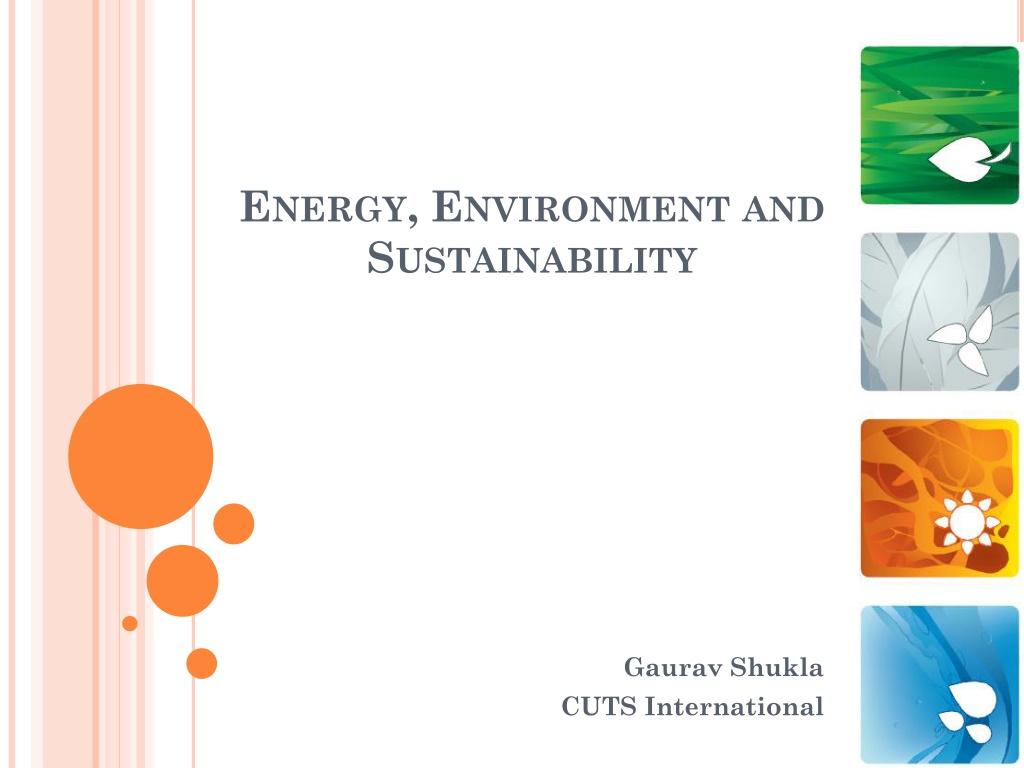
 undefined
undefined


















